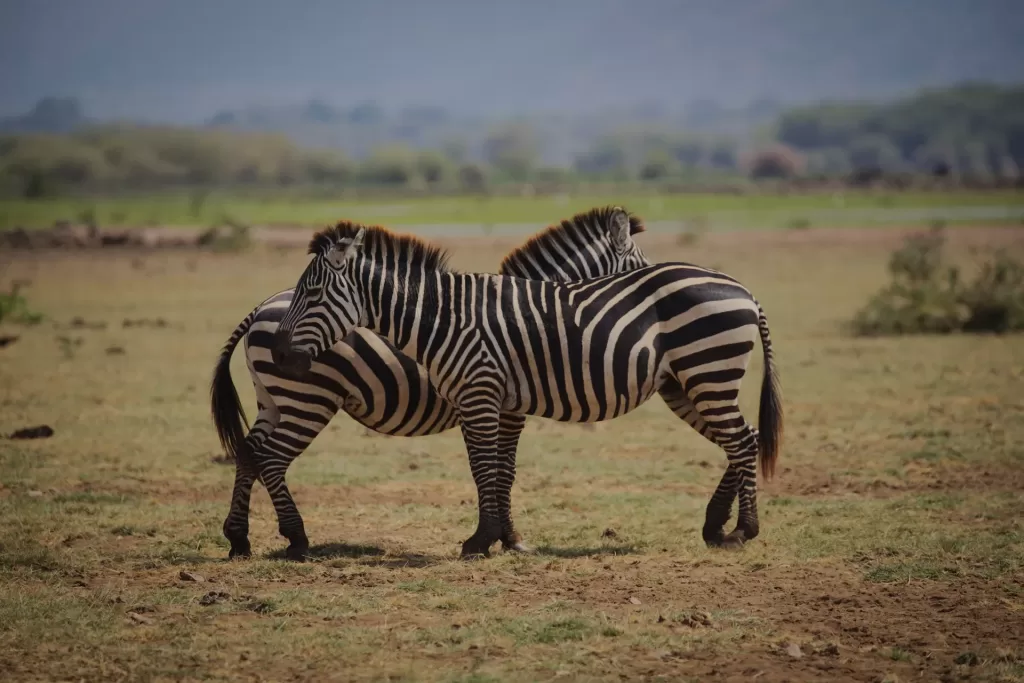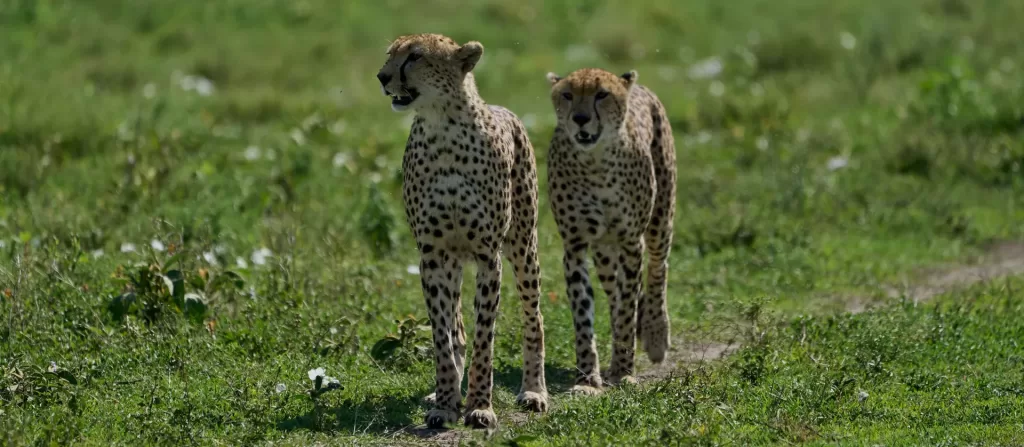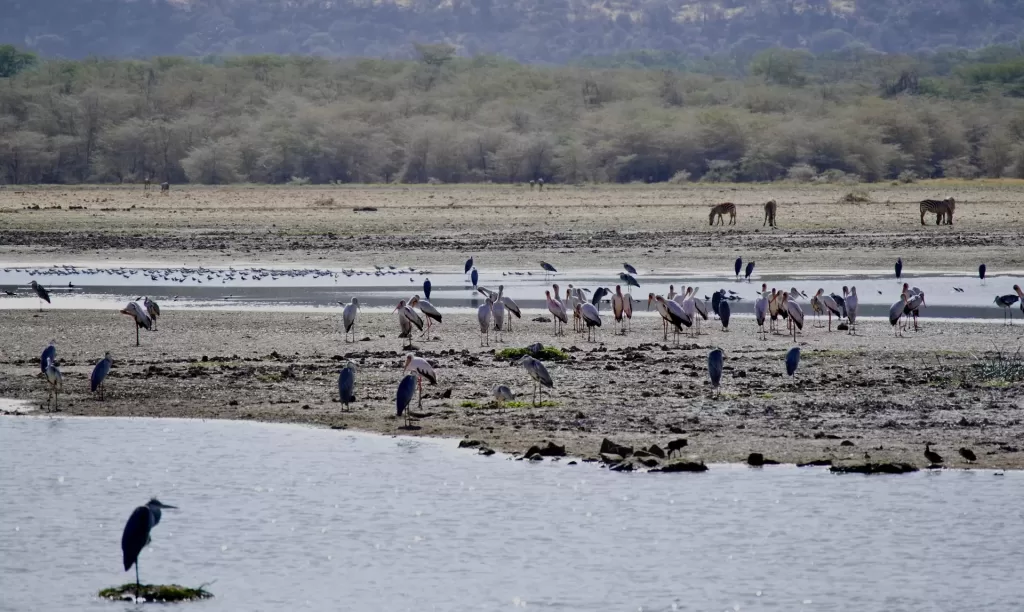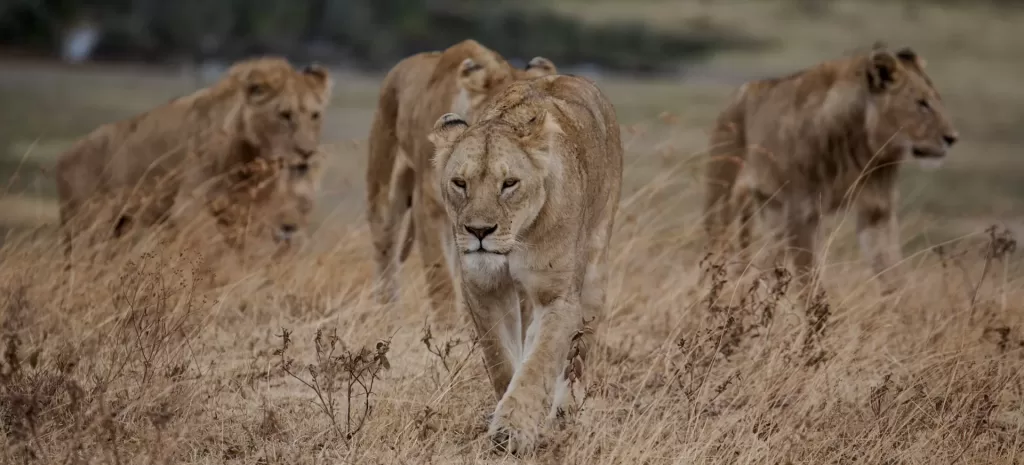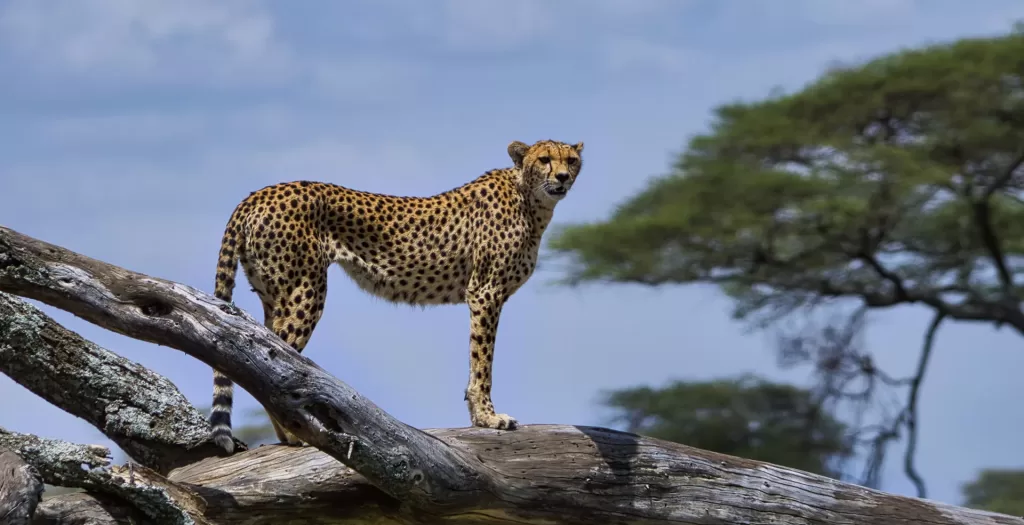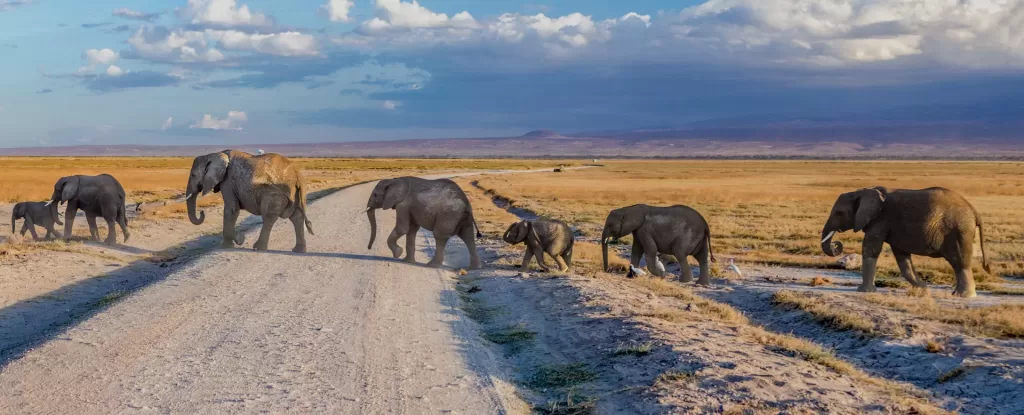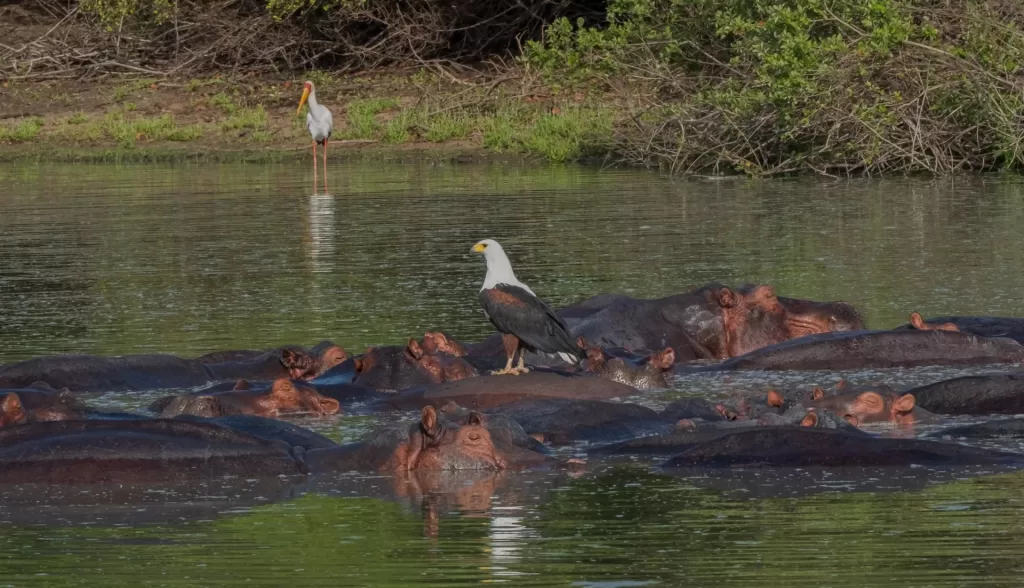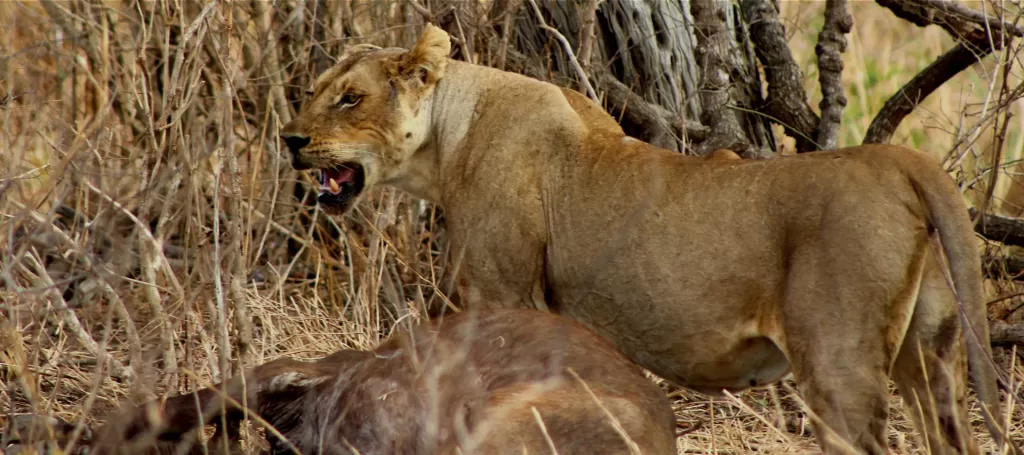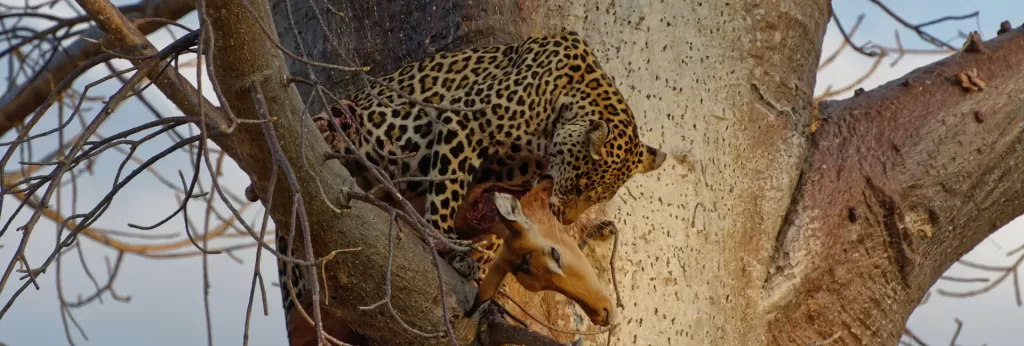Mahale National Park
Mahale National Park – A Chimpanzee Sanctuary
Explore Mahale National Park: Home to Chimpanzee Sanctuary
Nestled 128 kilometers south of Kigoma, along the eastern shores of Lake Tanganyika, lies Mahale National Park, covering a sprawling 1,613 square kilometers. Lake Tanganyika, the world’s second deepest lake at 1,470 kilometers, adds to the park’s allure as the largest freshwater lake globally.
This breathtaking sanctuary boasts an eclectic mix of habitats, from riverine and montane forests to savannah grasslands, alpine bamboo, and miombo woodlands.
In collaboration with the Jane Goodall Institute, the Albertine Rift Program conducted surveys in the mid-2000s to estimate the chimpanzee population within the Greater Mahale Ecosystem and assess its diverse landscape. The findings revealed approximately 1,078 chimpanzees inhabiting the park’s expanse. Notably, the Mimikire clan, comprising around 60 individuals, has been habituated by researchers since 1965.
Mahale National Park is not only a haven for chimpanzees but also hosts eight other primate species, including the Red colobus, Black and White colobus, Yellow baboon, Vervet monkeys, Red-tailed monkey, silverback monkey, and two nocturnal species, the Great and Lesser bush-babies.
Mahale National Park boasts breathtaking scenery that is sure to enchant nature enthusiasts. Towering mountains, such as the majestic Nkungwe, dominate the landscape, offering sweeping vistas of the surrounding wilderness.
The crystal-clear waters of Lake Tanganyika provide a stunning backdrop to the park, inviting visitors to relax on its sandy shores or embark on aquatic adventures, from snorkeling among colorful fish to kayaking along its tranquil surface.
Birdwatchers will delight in spotting over 350 species of birds, from the vibrant Fischer’s lovebird to the majestic African fish eagle.
Additionally, diverse wildlife roams the park, from squirrels, porcupines, and mongoose to African favorites such as lions, giraffes, wild dogs, zebras, waterbucks, and bushbucks, enriching the safari experience on the open savannahs.
Embark on an unforgettable journey through Mahale National Park, where every corner reveals the wonders of nature and the harmony of its inhabitants.
Things to do in Mahale National Park
Chimpanzee Trekking
There are about 60 habituated chimps for chimp trekking taking on 6 people per group. Chimpanzee trekking features as the major thing to do in Mahale National Park, the focal point for visitors doing chimpanzee trekking is the 60-strong Mimikere, or ‘M’ group, which has been habituated and thus tourists can have close encounters with these close human relatives in the dense forests in the park.
You may not spot any chimps on your first try, but it is rare to spend two or three days in Mahale National Park without seeing any chimpanzees, The experience of chimpanzee viewing in their habitat itself is captivating as a chimpanzee brushes past you on the trail almost without warning and several other chimpanzees are visible in a clearing just ahead or high above in the treetops.
Birdwatcher’s Paradise at Kabezi Area
There are about 350 bird species recorded especially forest birds. Mahale National Park has a record of over 350 bird species, including migratory, water, and forest birds.
The best time for bird-watching in Mahale National Park is from November to April when you will find resident birds in their breeding plumage and migratory birds traveling from northern Africa and Europe. Look out for the Crested Guinea Fowl, Giant Kingfisher, Palm Nut Vulture, and Scaly Francolin, among many others.
Dhow sundowners
Go for sundowners on the old wooden dhow, lazily following the shoreline. Onboard, you can enjoy romantic sundowners and watch the sunset over the lake on a 1.5-hour tour.
Sport fishing on Lake Tanganyika and Boat cruise.
Sport fishing is done with a catch-and-release method between 7 am to 5 pm after acquiring a fishing permit. The best time for sport fishing on Lake Tanganyika is on a nice sunny day when the water is calm.
If you’re interested in spending a day angling on this deep and ancient lake with over 400 fish species. Take a boat cruise along Lake Tanganyika – look out for the Nile crocodiles while taking in the fresh air and relaxing at the Lake enjoying the view of the Great Rift Valley slope.
Snorkeling in Lake Tanganyika
With over 250 species of fish unique to the lake, this is a great spot for snorkelers and keen divers, as brightly colored cichlids (endemic fish), and clear waters make perfect viewing conditions.
Hiking Mount Nkugwe.
Mount Nkugwe Mahale’s highest peak is 2,462m with seven peaks. Mount Nkungwe is a 2 – 3 day hike as you hike your way through to the peak accompanied by an armed park ranger en route camping. The peak is a place of spiritual significance for the Tongwe people who once lived in the mountain. There are chances to view animals and birdlife with amazing scenic views.
Get to experience the fishing community in their fishing boats lit with kerosene lamps, lighting up the night, it’s a beautiful spectacle known as the “fishing fire. The best time to take this hike is during the dry season, from June to October. In the rainy season, the slope of the mountain becomes too wet and dangerous to climb.
Cultural visits
Learn more about the local villages of Holoholo and Batongwe. Ujiji and Kigoma towns also provide historical tours about German colonial rule.
At Mahale National Park, visitors can meet the Holoholo (a branch of the Bantu) and Batongwe in nearby villages. Kigoma, the district capital, is also worth a visit for its historical value. Kigoma was a hub for the slave and ivory trade in the 19th century, developing into a transportation hub and railway terminus from Dar-es-Salaam in the 20th century. Interestingly, it was where the reporter, Stanley, found the presumed-lost-in-Africa, Dr. Livingstone, in the late 1800s.
Where to stay at Mahale National Park
Greystoke Mahale – Luxury Option
The camp is located on a wide, golden beach along the eastern shores of Lake Tanganyika, sheltered by the dense forests of the Mahale Mountains rising behind the lodge, about 15km from the airstrip by boat and about 30 minutes by small aircraft to Kigoma.
There are 6 wooden bandas under shady grass thatch, with extraordinary and luxurious interiors fashioned from seasoned dhow timber. The suites are open-fronted, with dressing rooms, adjoining bathrooms and upstairs chill-out decks, electric solar lighting, and large beds with crisp sheets and mosquito netting. The lodge has a dining area with a bar and library and a second bar area on a headland overlooking the lake.
Mbali Mbali Mahale – Midrange Option
The rooms tucked into the lush trees sit ten luxury canvas safari tents, perched on raised wooden platforms above the sandy lake shores. King-sized Zanzibarian four-poster beds draped with light cotton sheets and mosquito netting add a lovely layer of safari comfort.
The furnishings are simple and light, and the triple room is perfect for families. Sleeping on the edge of the forest canopy sitting on your deck looking out over Lake Tanganyika, and the rustling of monkeys and birds all around you is sheer bliss.
The best time to visit Mahale National Park
In the dry season months of June to October, the undergrowth is less dense and the chimps frequently come down near the main lodge area to feed. This is the ideal time for visiting Mahale Mountains National Park.
During the wet season, from November until May, the chimpanzees spend much of their time in the trees which can be difficult to find. However, November to April is ideal for bird watching as these are breeding months and migratory bird species from Europe and North Africa are existent as well. From March through May, the trails become unpleasantly muddy.
How to get to Mahale National Park
By air – June to October months has three to five hours of regularly scheduled flights from Arusha and Dar es Salaam. Charter flights can also be arranged on request. Air Tanzania schedules daily flights from Dar es Salaam to Kigoma. The flight takes about 3 hours.
By boat – Mahale National Park is not easily accessible by road, and the journey requires multiple modes of transportation. From Kigoma, take a boat or ferry to the park; The boat ride can take 4 to 5 hours, depending on weather conditions.
Other Tanzania Safari Destinations
“Embark on an Epic Tanzanian Safari Adventure: Where Nature’s Majesty Unfolds!”
Contact our safari experts to start planning your trip.
ABOUT TRAVELERS LINK AFRICA
Our mission at Travelers Link Africa is to connect people to positive travel experiences enabling them to see the world differently, transforming lives and the communities visited.
To do this we offer authentic travel experiences taking you on both an outer adventure and an inner journey to create memories of a lifetime with Uganda, Kenya, Tanzania, and Rwanda
CONNECT WITH US
We’re here to help, so get in touch with our friendly travel consultants to book your package or add customizations your safari
Our main phone number is
+256 754 062 366
– OR –

